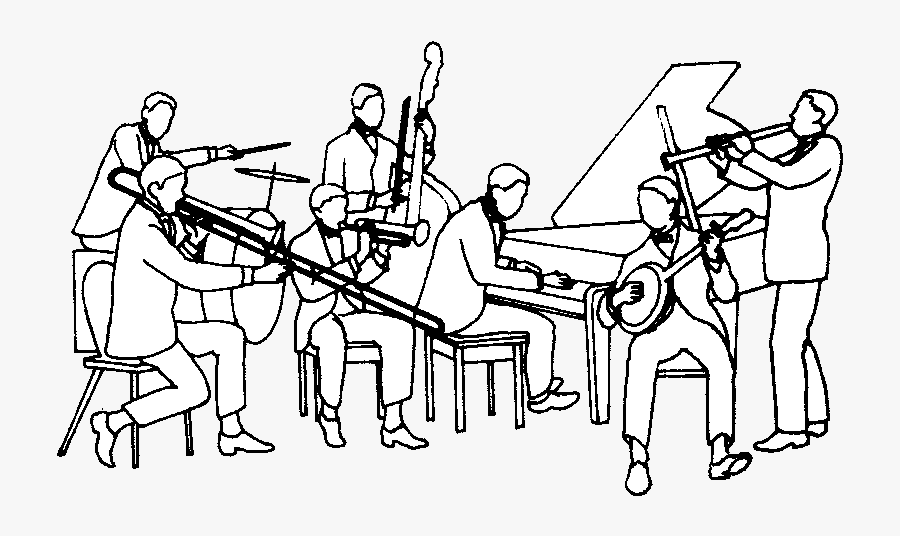Come Join our SheCodes Big band!
Find out if the instrument you play can be part of a typical big band
A big band is a type of musical ensemble of jazz music that usually consists of ten or more musicians with four sections: saxophones, trumpets, trombones, and a rhythm section. Big bands originated during the early 1910s and dominated jazz in the early 1940s when swing was most popular. The term "big band" is also used to describe a genre of music, although this was not the only style of music played by big bands. Big bands started as accompaniment for dancing. In contrast to the typical jazz emphasis on improvisation, big bands relied on written compositions and arrangements. They gave a greater role to bandleaders, arrangers, and sections of instruments rather than soloists.

While the instruments in the drawing above can all be part of a big band, this is actually a smaller Jazz ensemble! Click on the button below to find out if your instrumentqualifies you to be in a big band
More about big band instruments
Big bands have four sections: trumpets, trombones, saxophones, and a rhythm section of guitar, piano, double bass, and drums. The division in early big bands was likely to be two or three trumpets, one or two trombones, three saxophones, and a rhythm section. In 1930, big bands usually consisted of three trumpets, three trombones, three saxophones, and a rhythm section of four instruments. Guitar replaced the banjo, and double bass replaced the tuba. In the 1940s, Stan Kenton's band and Woody Herman's band used up to five trumpets, four trombones (three tenor, one bass trombone), five saxophones (two alto saxophones, two tenor saxophones, one baritone saxophone), and a rhythm section. An exception is Duke Ellington, who at one time used six trumpets. While most big bands dropped the previously common jazz clarinet from their arrangements (other than the clarinet-led orchestras of Artie Shaw and Benny Goodman), many Duke Ellington songs had clarinet parts, often replacing or doubling one of the tenor saxophone parts; more rarely, Ellington would substitute baritone sax for bass clarinet, such as in "Ase's Death" from Swinging Suites. Boyd Raeburn drew from symphony orchestras by adding flute, French horn, violin, and timpani to his band. Twenty-first century big bands can be considerably larger than their predecessors, exceeding 20 players, with some European bands using 29 instruments and some reaching 50.
Find out more about big bands on Wikipedia